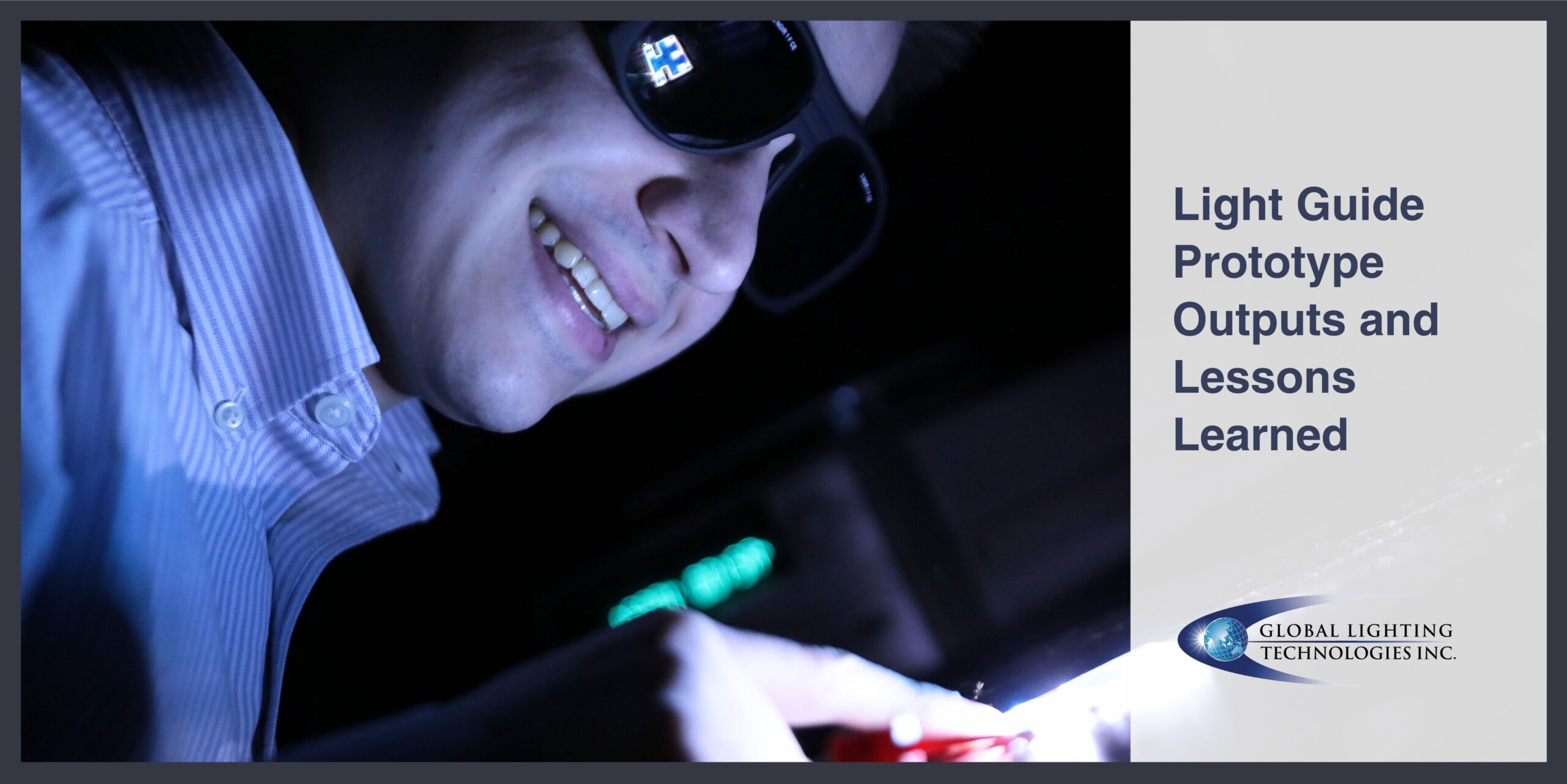Why Create a Light Guide Prototype? Insights from Our Engineers
Original equipment manufacturers (OEMs) need a light guide prototype for their illuminated devices. If you haven’t experienced the value of prototypes in the past, this resource is for you! Prototyping has many benefits, including the ability to:
- Validate concepts early on
- Experience the look and feel of the design in your hands
- Identify and address potential issues before full-scale production, saving time and money
Prototypes provide a “quick read on how their final product will look and function,” according to Project Engineer Dillon Brady, allowing customers to make informed decisions and adjustments before committing to full-scale production. As you consider your next light guide manufacturer, evaluate if they incorporate prototyping as a critical step in their overall process.
Read on for insights into our three main prototyping processes, key outputs, lessons learned, and future prototype advancements. Brady weighs in with his prototyping experience and the value it delivers to OEMs time and again.
We Create Prototypes for Every Project
Prototyping is an integral part of most Global Lighting Technologies projects. As Dillon Brady mentions, “Most of our projects require a prototype in some way,” whether through optical iterations or assembly fit and function testing. Prototypes are essential for ensuring that our designs meet specifications, particularly for components like backlights used with LCD screens, where brightness and fit are crucial.
Common Prototyping Processes
We leverage three primary prototyping methods: laser-etched, injection-molded, and CNC-machined and polished prototypes. Each method serves different needs (which we cover in-depth here) and timelines:
- Laser-etched: Typically completed within 4-6 weeks.
- Injection-molded: Requires tooling, extending the timeline to 6-8 weeks.
- CNC-machined: Allows for 3D profiles without injection mold tooling.
Based on your final light guide requirements, our team will recommend the most efficient prototype process for your project.
Real Outputs of a Light Guide Prototype
A standout example of successful prototyping with big benefits is an illuminated AED for which we designed the light guide. Brady recounts how “providing this prototype to the customer allowed them to review the product and make necessary updates before production, ultimately leading to a critical design change.” From the customer’s design edits, we made significant improvements that were implemented before full-scale production.
Customer feedback during the prototyping phase is crucial for refining designs. We value this feedback loop because it saves our customers time and resources by preventing costly mistakes later in the process.
Engineer Lessons Learned from Prototyping
Prototyping is not without its challenges. Brady shares an instance where a prototype’s tolerances were achievable in our US office but proved problematic for mass production.
Once we learned of this challenge, we refined the design by working with specialized engineers and conducted numerous trials with our Taiwan production facility.
Working through these hurdles provides invaluable lessons. One key takeaway is the necessity of designing with manufacturability in mind. As Brady notes, “From what we’ve learned in the past, we always consider the entire design when we prototype. This way, we can go from prototype to full-scale production seamlessly.” Ensuring that prototypes are feasible for mass production is essential for successful project outcomes.
The Future of Prototyping
Over time, our prototyping processes have evolved, particularly in laser etching technology. Advances in this field have allowed us to create more precise custom optical patterns, enhancing prototypes’ overall quality and functionality.
Advances in injection molding technology and dual-shot injection molding are anticipated to impact our prototyping processes. These developments will enable the production of thinner, more precise components, further enhancing the quality and efficiency of our prototypes.
We’re also exploring the use of recycled plastics in prototypes. While this initiative aims to enhance sustainability, it has faced challenges with contaminants affecting optical clarity. We’re committed to advancing this solution with ongoing testing and trials.
The Case for Light Guide Prototypes is Clear
We learn valuable lessons by creating light guide prototypes, which ultimately contribute to quality and precision in product development. As we look to the future, advancements in technology and materials will further enhance our ability to deliver cutting-edge prototypes. Reach out to our team to learn more about our light guide prototype processes and how they can deliver unparalleled value to your product development.
